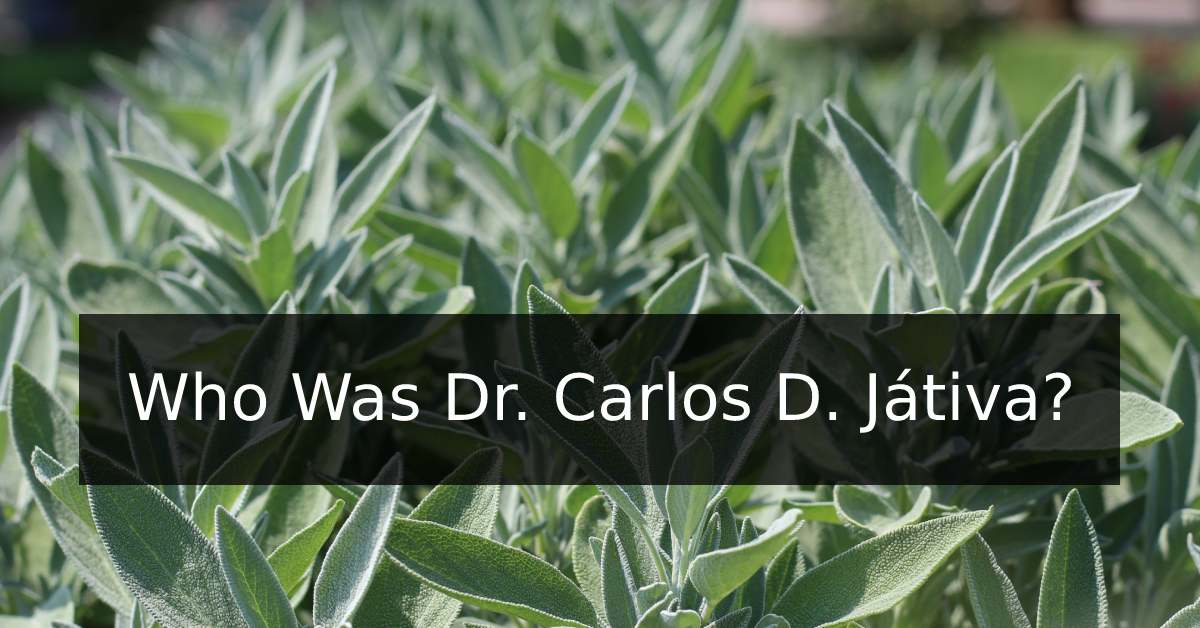Carlos D. Játiva was an Ecuadorian botanist and taxonomist who made significant contributions to the study of plant diversity and conservation, particularly in his work on the Salvia genus. Born on December 11, 1928, in Quito, Játiva became interested in botany at a young age and went on to study at the National Polytechnic School of Ecuador. He later pursued a Ph.D. in botany from the University of California, Berkeley, where he developed his expertise in plant taxonomy and systematics.
Játiva’s research focused on the identification and classification of plant species, with an emphasis on the Asteraceae, Melastomataceae, and Solanaceae families. He authored over 100 scientific publications, including books and articles, on topics such as plant diversity, conservation, and taxonomy. Játiva also served as a professor at the National Polytechnic School and as a researcher at the National Herbarium of Ecuador, where he made significant contributions to the study of Ecuador’s flora.
One area of Játiva’s research that has garnered attention is his work on the Salvia genus, which includes the well-known psychoactive plant, Salvia divinorum. Játiva’s research on Salvia focused on the taxonomy and systematics of the genus, including the identification of new species and the analysis of the diversity and distribution of existing species.
Salvia divinorum is a plant species that is native to the Sierra Mazateca region of Oaxaca, Mexico, where it has been used traditionally by the Mazatec people for religious and healing practices. The plant contains a psychoactive compound called salvinorin A, which is known for its potent hallucinogenic effects.
Játiva’s work on Salvia included the description of several new species of the genus, such as Salvia cinnabarina and Salvia yacuambensis. He also contributed to the understanding of the diversity and distribution of Salvia species, particularly in Ecuador, where many species of Salvia are endemic.
Játiva’s contributions to the study of Salvia have been significant in shedding light on the diversity and complexity of the genus. His work has also helped to increase our understanding of the traditional uses of Salvia species and their potential medicinal properties.
In addition to his work on Salvia, Játiva made significant contributions to the study of Ecuador’s flora, including the identification of new species and the documentation of the country’s plant diversity. He was also a vocal advocate for the conservation of Ecuador’s natural resources, particularly in the face of environmental degradation caused by human activity.
What was Carlos D. Játiva affiliation with Carl Clawson Epling?
Carlos D. Játiva had a professional affiliation with Carl Clawson Epling, an American botanist who was also a specialist in the study of the Salvia genus. Epling was born in 1894 and passed away in 1968. He was a professor of botany at the University of California, Los Angeles (UCLA), and made significant contributions to the taxonomy and systematics of several plant families, including the Boraginaceae and the Labiatae (mint family), which includes the Salvia genus.
Játiva and Epling collaborated on several botanical publications throughout their careers, including a 1962 article titled “A New Species of Salvia from Mexico,” which described a previously unknown species of Salvia, Salvia divinorum. This article was significant because it marked the first time that the psychoactive plant Salvia divinorum was introduced to the scientific community.
Játiva and Epling’s collaboration continued with their joint authorship of the book “Flora of California,” which was published in four volumes between 1950 and 1968. This publication was a comprehensive study of the plant species found in California, and it is still considered a definitive reference work in the field of botany today.
Epling and Játiva’s work on the Salvia genus was particularly important because it helped to establish a more accurate taxonomy and systematics of the genus, which had previously been poorly understood. Their collaboration helped to establish the classification and identification of many new species of Salvia, including Salvia cinnabarina, which was named after the red pigment cinnabar.
When Did They First Witness Salvia Being Used?
There is a story that is often told about Carlos D. Játiva and Carl Clawson Epling being witness to the first use of Salvia divinorum. According to the story, in 1952, Játiva and Epling were on a field trip in Mexico when they were introduced to the plant by a Mazatec shaman named María Sabina.
María Sabina was a curandera, or traditional healer, who used Salvia divinorum in her healing rituals. She shared her knowledge of the plant with Játiva and Epling, who were fascinated by its psychoactive properties. They collected samples of the plant and brought them back to the United States for further study.



